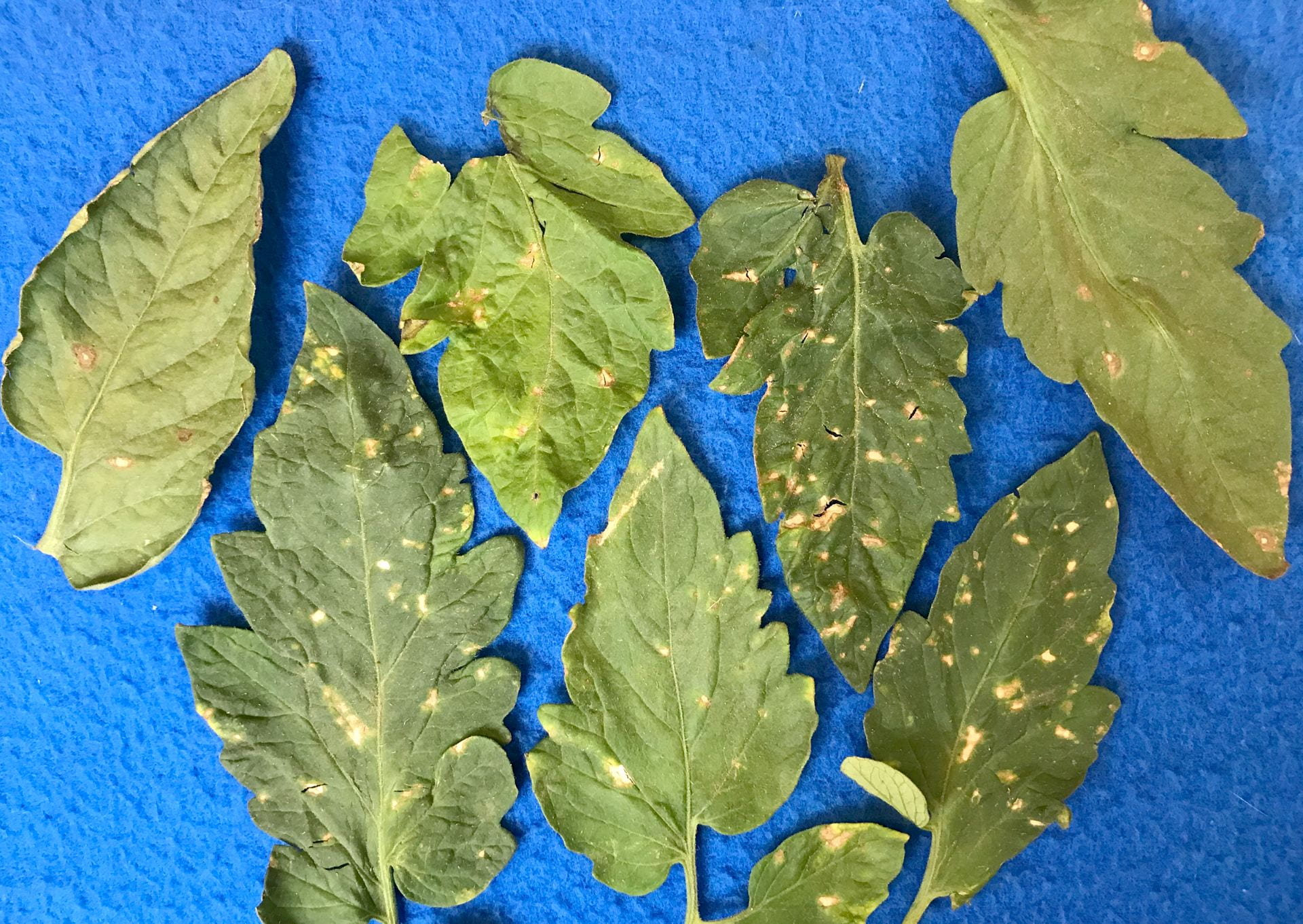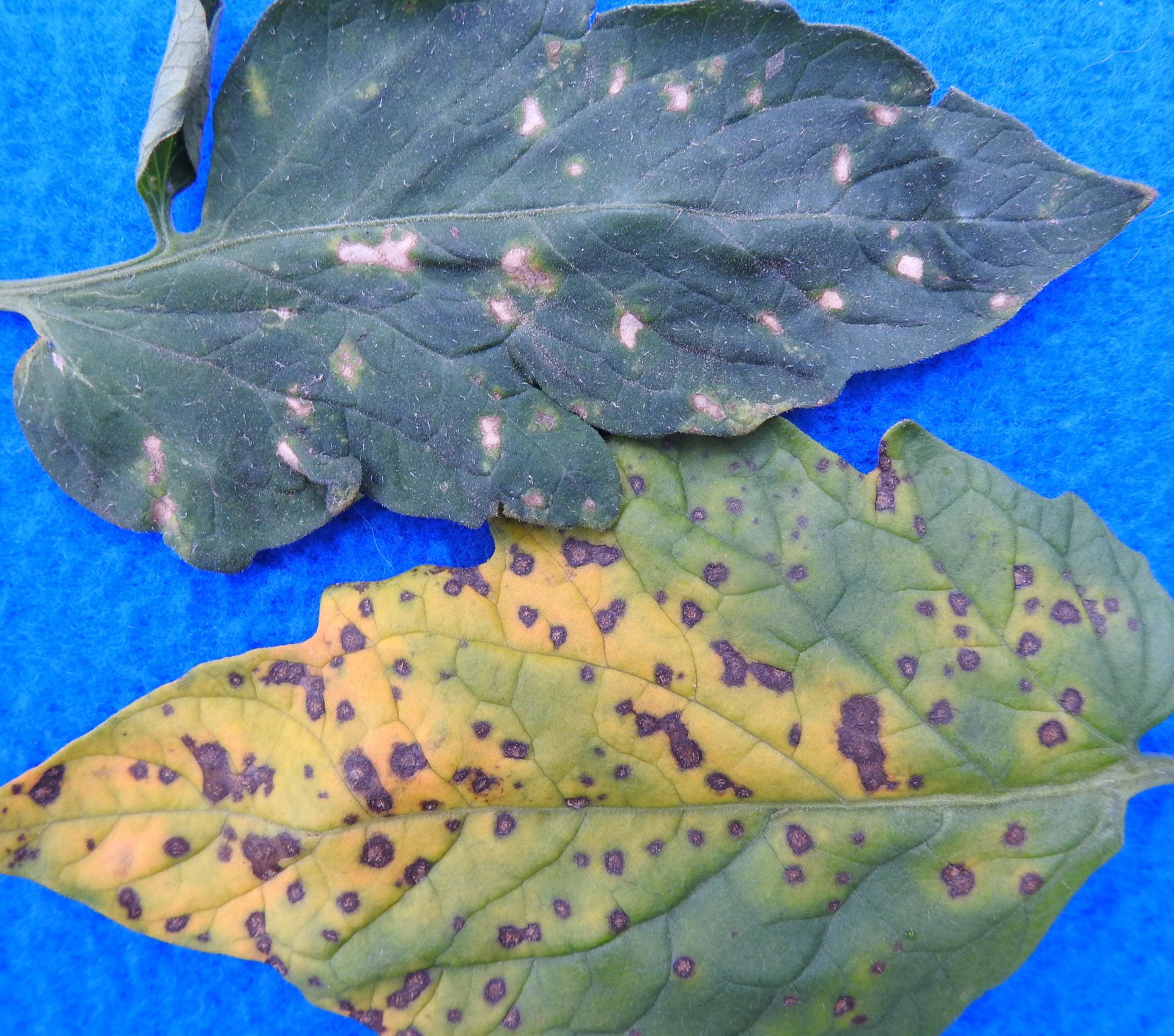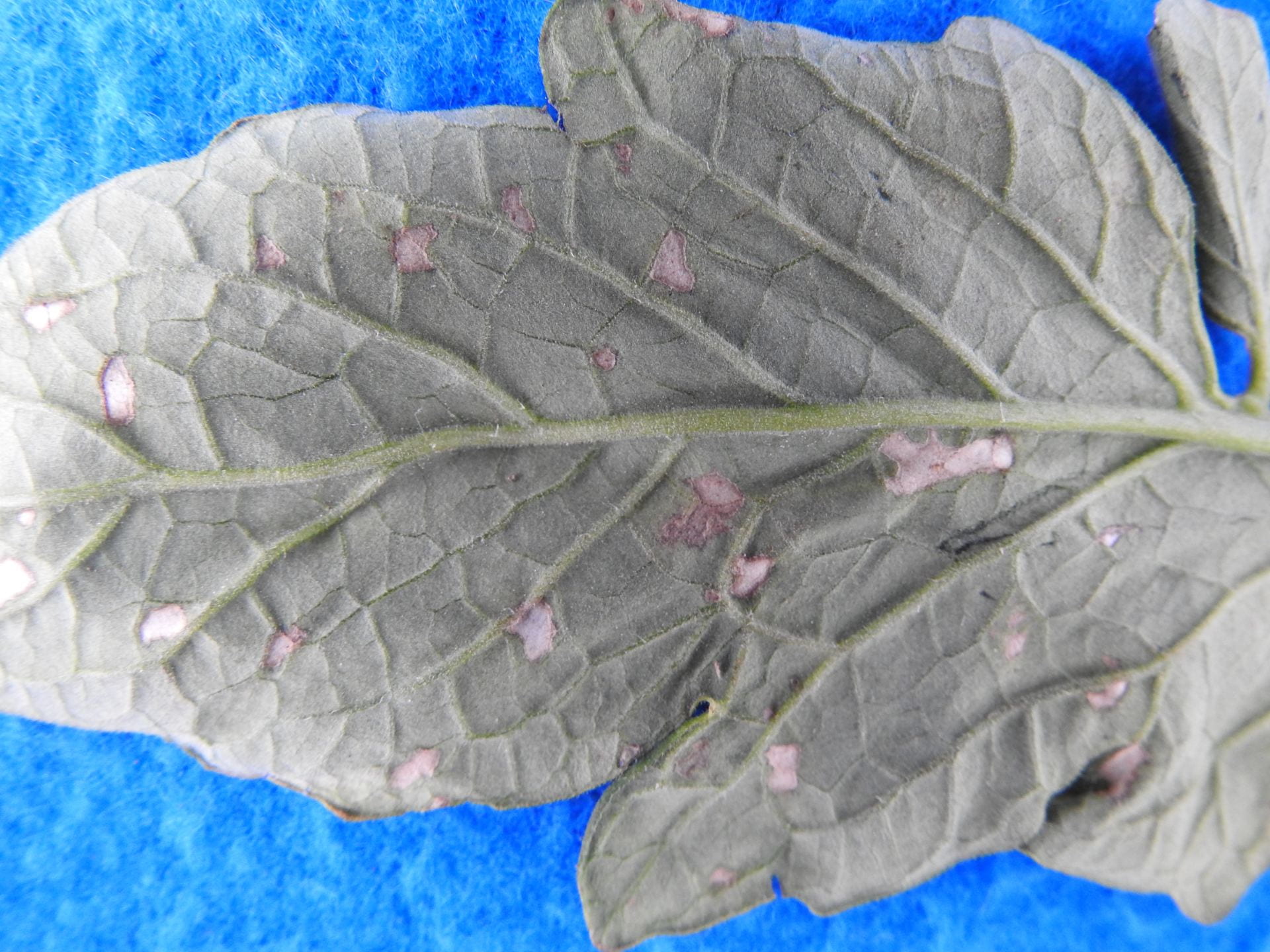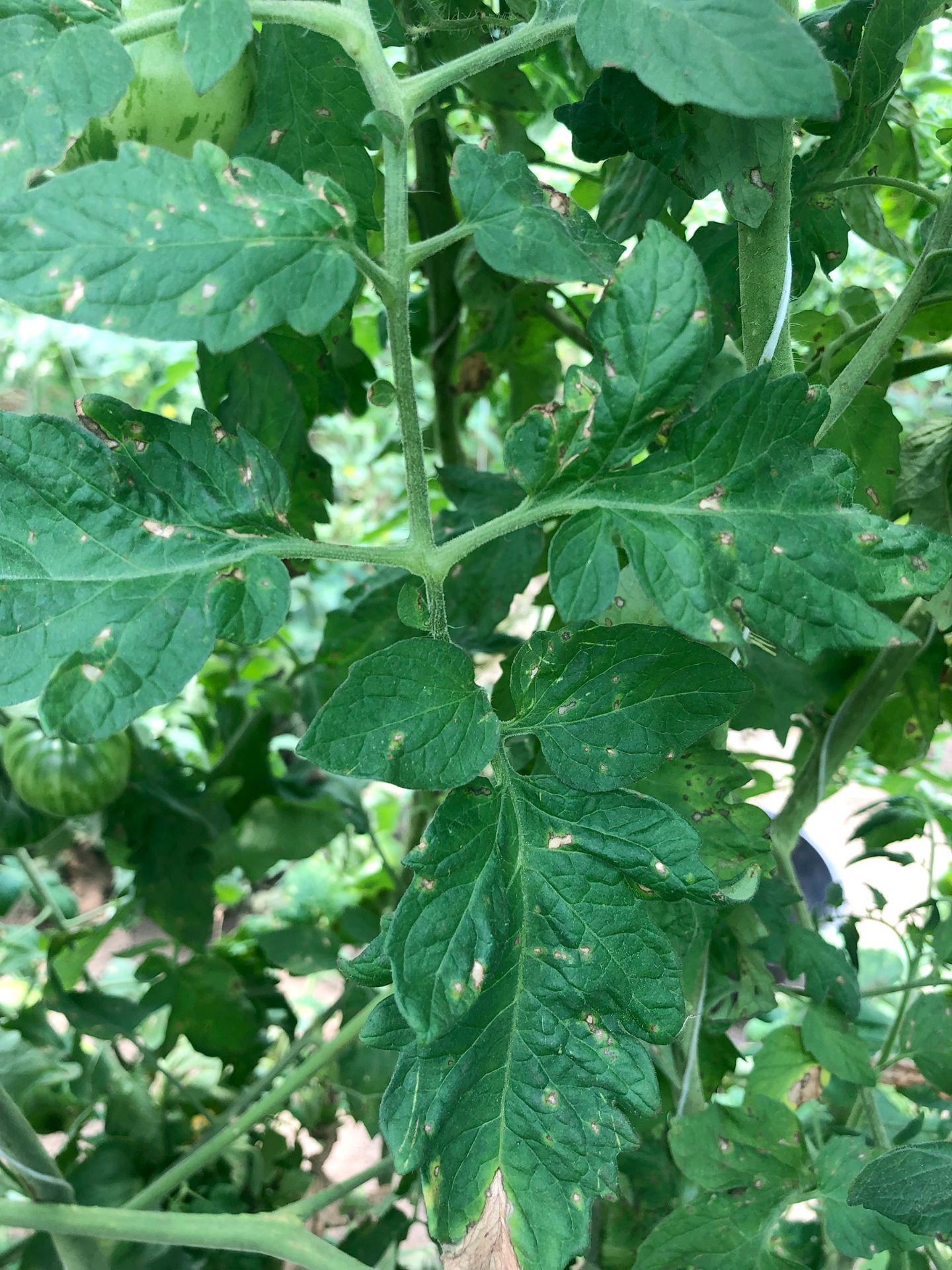Stemphylium leaf spot, also known as gray leaf spot, was first confirmed on Long Island in August 2021. It was seen in high tunnel plantings first and subsequently in a field planting. It may have occurred in previous years but symptoms were mistaken for Septoria leaf spot. This foliar disease has also been reported elsewhere in the northeast recently, mostly in high tunnels. It has been occurring more regularly in southeastern states, and in tropical and subtropical regions of the world. Higher humidity and higher temperature in high tunnels than in field plantings may be creating favorable environment for this disease. Additionally, there were several hot and humid days outside during summer 2021. High humidity or free water on leaf surfaces is required for spore germination and infection.
Spots on leaves were small, light brown, and somewhat circular to irregular in shape. Some larger spots were cracked. Diagnostic spores of Stemphylium were observed on upper and lower surfaces of most spots examined after the leaves were incubated under high humidity in a ziplock bag. Symptoms have been reported to also develop on petioles and stems. And are reported to start to appear within two to five days of infection.
The pathogen’s spores are dispersed by air currents and splashing water. Left unmanaged, leaves can become severely affected with spots coalescing, turn yellow, then die leading to defoliation. The pathogen is dispersed by wind and splashing water, can be seed-borne, and survives in crop debris. Cherry and grape tomatoes are more susceptible than other types.
Four species of the fungus cause this disease. They can also infect pepper, eggplant, potato, and solanaceous weed species plus other plants including spinach, blue lupine, gladiolus, and cotton. These fungi can survive as saprophytes on infested plant debris.
Manage with disease-free seed, resistant varieties and cultural practices including drip irrigation and wide plant spacing. Additionally in high tunnels use fans and open sides to reduce humidity, and remove affected plant debris. Also manage solanaceous weeds. Chlorothalonil is labeled for managing this disease in field crops.
See table at NCSU webpage for additional fungicides labeled for use in field. For high tunnel crops, check label to make sure use there is not a statement prohibiting use in greenhouse.
Please Note: Fungicides mentioned are for use in commercial production, not gardens. The specific directions on pesticide labels must be adhered to — they supersede these recommendations if there is a conflict. Any reference to commercial products, trade or brand names, is for information only; no endorsement is intended. For up-to-date information on labeled conventional fungicides see Cornell Integrated Crop and Pest Management Guidelines for Commercial Vegetable Production and biopesticides see the Biopesticides website.
Leaf spots caused by Stemphylium (first leaflet in image below) resemble those caused by Septoria (second leaflet). Note difference in spot color and presence of spore tendrils (tiny bumps) in the spots caused by Septoria, which were induced to form by keeping the leaflet on wet paper towel in a ziplock bag overnight. Second image below is the underside of the leaflet with Stemphylium leaf spot.
Following two photographs were taken in a high tunnel by Sandra Menasha, Vegetable/Potato Specialist with Cornell Cooperative Extension-Suffolk County.
Leaves are dead due to Stemphylium leaf spot in the following photograph taken in a high tunnel in Rhode Island by Andy Radin, Research Associate/Ag Extension Agent, University of Rhode Island.









